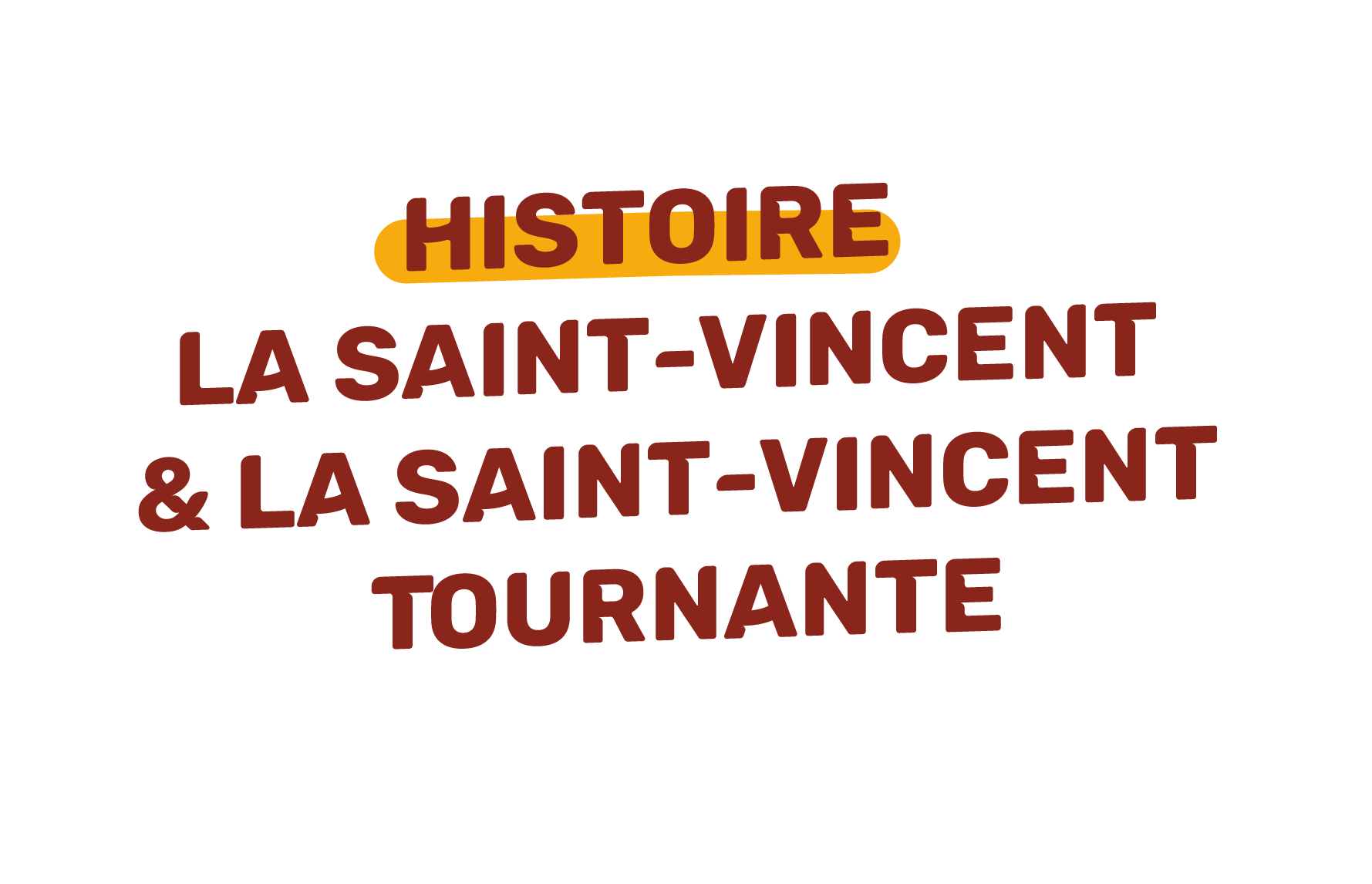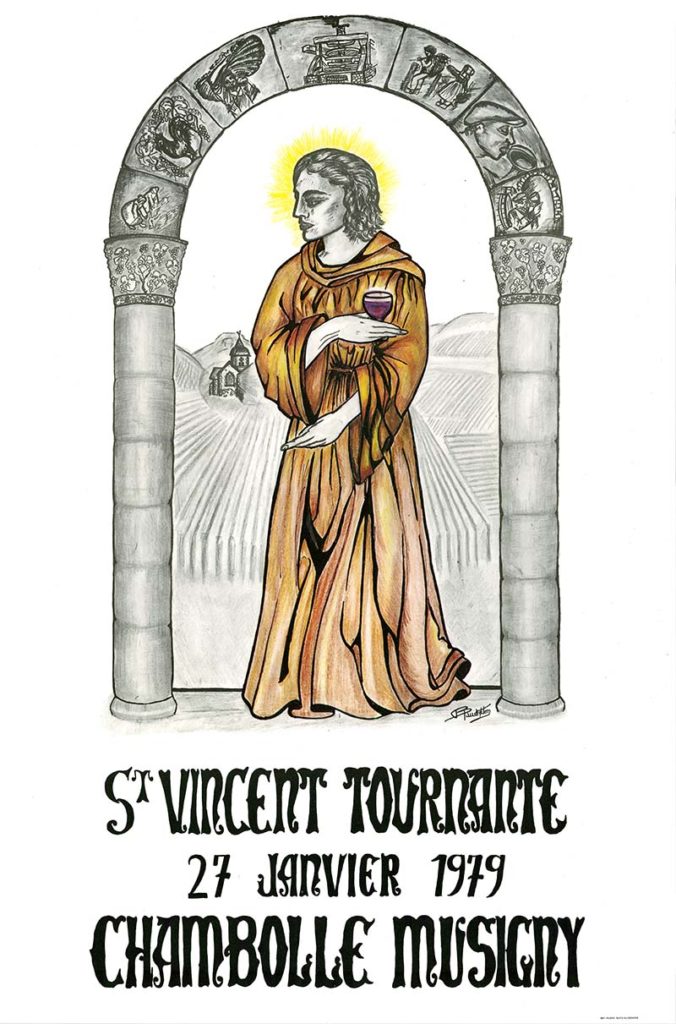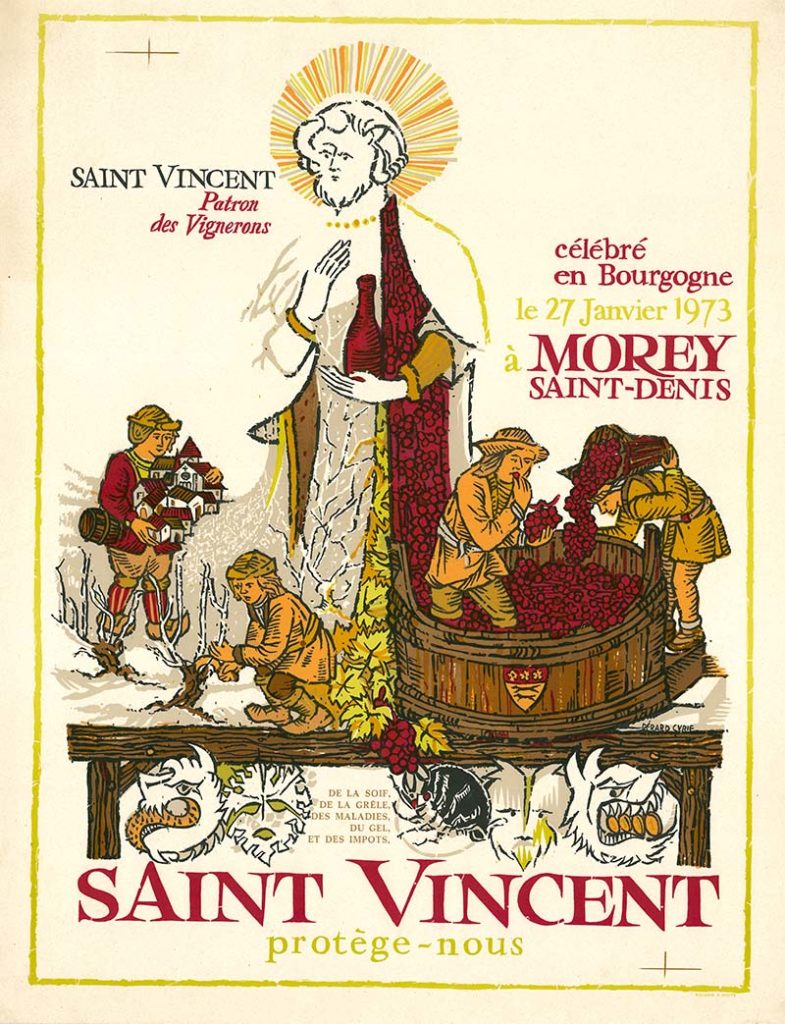


Who is Saint Vincent ?
Around 300 AD, Saint Vincent (priest who died as a martyr on January 22, 304), traveled through Spain and preached accompanied by his donkey. The donkey, reluctant to preach to his master, apparently devoured a vine plan, the furious winegrowers chased Vincent and his donkey. The following year, the devoured vine plan bore more fruit than any other... Did the donkey invent pruning?
Be that as it may, Saint Vincent became the patron saint of winegrowers.
And so since the Middle Ages, on January 22 of each year, winegrowers meet to celebrate Saint Vincent.
Saint Vincent Societies, what are they?
We are already talking about this kind of brotherhood in the Middle Ages, then of their dissolution during the revolution, to see them reappear around 1850 in the form of a society.
Originally, the Saint Vincent societies were created in solidarity with winegrowers in difficulty (illness, death, uncertainties of life). Each member of the company carried out what were called chores, for the benefit of the prevented winegrower. They have become mutual aid societies between winegrowers. Today, requests for chores are rarer, the wine-growing structures have evolved a lot, but the companies persist and are a strong link in the profession.
In some villages, at a time when the republic did not mix well with religion, deux sociétés cohabitaient in the same village (notably Morey). One carrying Catholic values: the society of Saint Vincent with the Saint, and the other: the mutual aid society with the banner whose members were reluctant to carry the Saint and preferred to carry the banner high! Today the squabble between "calotins" and "reds" is buried, all are united in the same society around the statue of Saint Vincent and the banner.
La Saint-Vincent
In most wine-growing villages, on January 22 the winegrowers celebrate Saint Vincent: a Mass, a parade and a well-watered meal! It's "little" Saint-Vincent!
Tradition has it that the statue representing Saint Vincent is entrusted to a winegrower for a year. The statue of Saint Vincent changes residence every January 22 and spends the year with a new winemaker host. After mass, a procession accompanies the saint to his new home and, whoever receives him, traditionally offers his wine to drink. The whole assembly then gathers around a banquet.
La Saint-Vincent Tournante
In 1934, with the wine market going through a major economic crisis, Georges Faiveley and Camille Rodier created the Confrérie des Chevaliers du Tastevin, hoping to restore momentum to the region by reaffirming these values: helping each other between winegrowers and perpetuating ancestral traditions.
It was in 1938 that the first Saint Vincent Tournante took place in Chambolle-Musigny, 6 Saint Vincent companies paraded! This Saint Vincent is called "Tournante", because every year a different village organizes and receives it. Locally it is also referred to as "great" Saint Vincent.
Today, it is a procession of more than 90 companies that crosses the village honored and decorated with care by all the inhabitants. The parade, the highlight of the event, starts at dawn, the bearers of Saint Vincent and banners walk with a step punctuated by the brass bands through the streets to the church for mass. Subsequently, they pay homage to the war memorials. To close the morning, the tradition is to honor the oldest of our winegrowers and winegrowers by inducting them into Chevalier du Tastevin. Then the cellars open their doors to visitors who can taste the wines generously offered by the winegrowers from the host village..
Let the party begin and be beautiful!
To find out more about the history of Saint-Vincent Tournante and the Confrérie des Chevaliers du Tastevin, visit the website: https://www.tastevin-bourgogne.com/fr/saint-vincent-tournante


